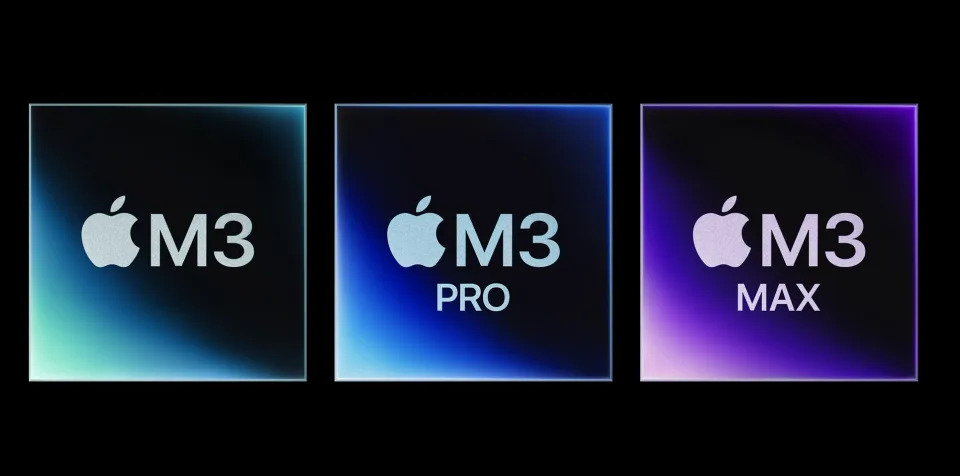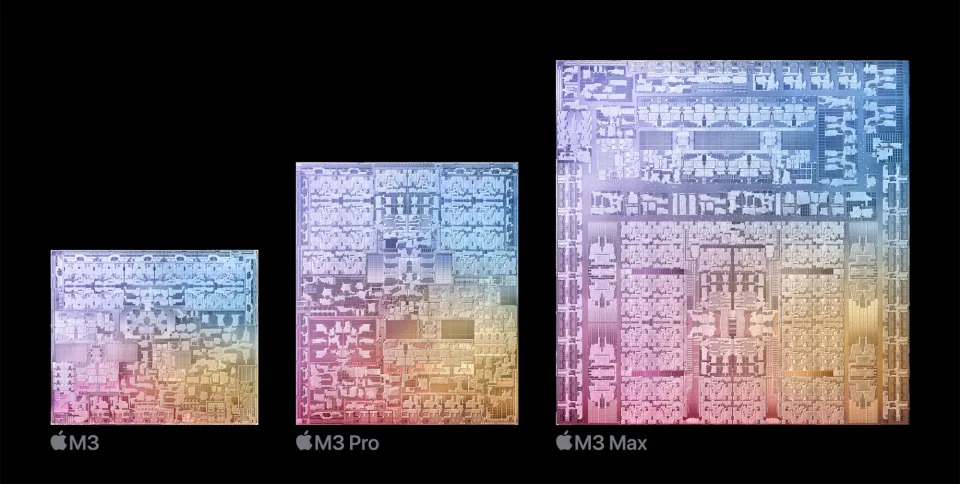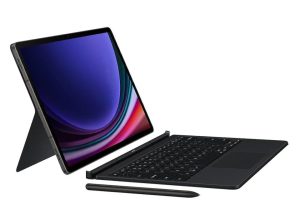Apple’s latest M3 chips may not be genuinely spine-chilling, except perhaps for the unease they may cause Intel, AMD, and Qualcomm. During its “Scary Fast” Halloween Eve product presentation (at the rather peculiar 8 PM Eastern, courtesy of Apple), the company officially unveiled the new M3, M3 Pro, and M3 Max chips. As showcased in this evening’s Apple Event, the M3 series will find a home in the revamped 14-inch and 16-inch MacBook Pro models, as well as the 24-inch iMac, which missed out on the M2 update.
Apple is primarily positioning the M3 chips as substantial upgrades over its M1 hardware, implying that if you recently acquired an M2 system, you’re likely not eager for a replacement just yet. The most significant leap in the M3 is its GPU, which introduces new capabilities like hardware-accelerated ray tracing and mesh shading, promising more realistic lighting and enhanced geometry handling. Apple asserts that the M3’s GPU is 1.8 times swifter than the M2 and a striking 2.5 times speedier than the M1 when it comes to “Pro apps,” though the specific testing criteria remain undisclosed. Additionally, expect improved power efficiency, as the M3’s GPU can match the M1’s performance while consuming only half the power.
Here’s the breakdown of Apple’s new hardware offerings: The standard M3 boasts an 8-core CPU, consisting of four performance cores and four efficiency cores, along with a 10-core GPU. Apple claims it’s up to 35 percent faster than the M1, and it can support up to 24GB of unified RAM. The M3 Pro takes it up a notch with a 12-core CPU (comprising six performance and six efficiency cores) and an 18-core GPU. It accommodates up to 36GB of memory and boasts single-threaded performance up to 30 percent faster than the M1 Pro.

As for the M3 Max, it boasts a 16-core CPU, with 12 performance cores and four efficiency cores, a 40-core GPU, and support for a whopping 128GB of RAM. Apple asserts that it’s up to 80 percent faster than the M1 Max, making it a powerful option for even the most demanding video professionals.
What’s particularly noteworthy about the M3 chips is that they are the first PC chips to be constructed using a 3-nanometer process, a step down from the M1 and M2’s 5nm process. This increased transistor density not only enhances power efficiency but also delivers superior overall performance. According to Apple, the M3’s performance cores outpace the M2’s by 15 percent, while the efficiency cores are 30 percent faster.
Considering that Apple recently introduced the 3nm A17 Pro for the iPhone 15 and 15 Pro, it’s not surprising that the M3 follows suit in adopting this smaller process. For context, AMD unveiled its 4nm Ryzen 7040 chip this year, and Intel has plans to launch its Core Ultra Meteor Lake laptop chips in December, based on the “Intel 4” platform and using a 7nm process. However, comparing processing node sizes across different architectures, some of which incorporate newer technologies like 3D stacking, can be challenging. For now, Apple can proudly claim its 3nm figure as a distinct advantage in the world of PC processors.
Regarding other enhancements, Apple reports that the M3’s Neural Engine, responsible for handling AI tasks, is up to 60 percent faster than M1 chips. The M3 also incorporates a media engine with hardware acceleration for H.264, HEVC, and ProRes (both standard and RAW), and introduces support for AV1 video decoding, which enhances the power efficiency of streaming AV1 content.
Like many chip manufacturers, Apple’s release strategy involves following a major release like the M1 with a minor refresh like the M2. The M3 must now prove itself as the substantial upgrade over the M1 that Apple claims it to be. With the addition of ray tracing and improved graphics, it may make Macs more appealing to both developers and gamers, especially with the arrival of major titles like Death Stranding and Resident Evil Village on the App Store.




